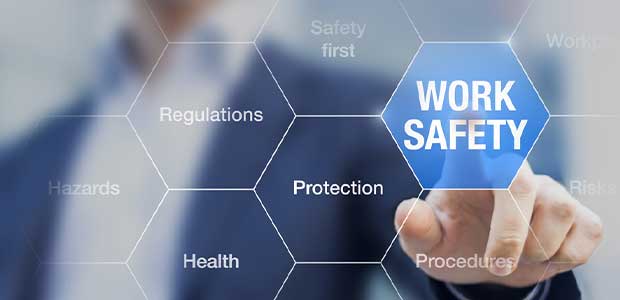OHSAS 18001:2007 Certification: Ensuring Occupational Health and Safety

Title: OHSAS 18001:2007 Certification: Ensuring Occupational Health and Safety
Introduction: In today’s fast-paced and competitive business landscape, ensuring the health and safety of employees is of paramount importance. OHSAS 18001:2007 certification provides organizations with a framework to establish and maintain effective occupational health and safety management systems. This blog explores the significance of OHSAS 18001:2007 certification, its benefits, and frequently asked questions surrounding this certification.
Understanding OHSAS 18001:2007 Certification: OHSAS 18001:2007, also known as Occupational Health and Safety Assessment Series, is an international standard that sets the criteria for occupational health and safety management systems. It provides organizations with guidelines to identify and control health and safety risks, reduce workplace incidents, and improve overall employee well-being.
Key Elements of OHSAS 18001:2007 Certification:
- Hazard Identification and Risk Assessment: Organizations must identify workplace hazards, assess associated risks, and implement controls to mitigate these risks effectively.
- Legal Compliance: Compliance with applicable occupational health and safety laws and regulations is essential. OHSAS 18001:2007 ensures organizations have mechanisms in place to meet legal requirements.
- Objectives and Programs: Establishing measurable objectives and implementing programs to achieve them allows organizations to continually improve their health and safety performance.
- Resources and Competence: Organizations must allocate resources, including personnel, training, and infrastructure, to ensure employees are adequately equipped to maintain a safe and healthy work environment.
- Emergency Preparedness and Response: Developing and implementing emergency response plans helps organizations effectively respond to and manage potential incidents or accidents.
- Performance Monitoring and Measurement: Regular monitoring and measurement of health and safety performance indicators enable organizations to identify areas for improvement and track progress.
- Incident Investigation and Corrective Actions: Prompt investigation of incidents, accidents, or near misses helps identify root causes and implement corrective actions to prevent future occurrences.
- Management Review: Top management conducts periodic reviews to assess the effectiveness of the occupational health and safety management system and identify opportunities for improvement.
Benefits of OHSAS 18001:2007 Certification:
- Employee Safety and Well-being: Implementing OHSAS 18001:2007 ensures a safer work environment, reduces accidents, and protects employees from occupational health hazards.
- Legal Compliance: Compliance with occupational health and safety regulations minimizes legal risks, penalties, and liabilities for the organization.
- Enhanced Organizational Reputation: OHSAS 18001:2007 certification demonstrates an organization’s commitment to the health and safety of its employees, enhancing its reputation among stakeholders, customers, and the public.
- Cost Reduction: A proactive approach to occupational health and safety management reduces workplace incidents, resulting in reduced costs related to medical expenses, lost productivity, and insurance premiums.
- Improved Employee Morale and Productivity: A safe and healthy work environment fosters employee morale, engagement, and productivity, leading to increased overall organizational performance.
Facts about OHSAS 18001:2007 Certification:
- OHSAS 18001:2007 was developed by leading international standards bodies to address occupational health and safety management.
- The standard provides a systematic approach for organizations to manage health and safety risks and continuously improve their performance.
- OHSAS 18001:2007 is compatible with other management system standards such as ISO 9001:2015 (Quality Management) and ISO 14001:2015 (Environmental Management).
Here’s a table outlining the key elements of OHSAS 18001:2007 certification:
| Element | Description |
|---|---|
| Scope | Defines the boundaries and applicability of the occupational health and safety management system (OHSMS). |
| Normative References | Lists the relevant international standards and regulations referenced in OHSAS 18001:2007. |
| Terms and Definitions | Provides definitions of key terms used in the standard. |
| Occupational Health and Safety Policy | Organizations must establish an OHS policy that reflects their commitment to occupational health and safety, outlining objectives and commitments to prevent workplace incidents and protect employee well-being. |
| Planning | Focuses on identifying hazards, assessing risks, and establishing controls to minimize occupational health and safety risks. Requires organizations to set objectives, develop programs, and allocate resources for their implementation. |
| Implementation and Operation | Organizations implement and maintain processes to control hazards, ensure compliance with legal requirements, provide OHS training, establish emergency preparedness procedures, and implement procedures for communication and consultation. |
| Checking | Involves monitoring, measuring, and evaluating occupational health and safety performance through inspections, incident investigations, and audits. Organizations must establish procedures for record-keeping and data management. |
| Management Review | Top management conducts periodic reviews of the OHSMS to evaluate its effectiveness, identify opportunities for improvement, and ensure its continued suitability, adequacy, and alignment with the organization’s goals. |
| Annex A: (Informative) | Provides additional guidance on the application of OHSAS 18001:2007 and information on occupational health and safety management principles. |
| Annex B: (Informative) | Offers a comparison between OHSAS 18001:2007 and the International Labor Organization’s ILO-OSH 2001 guidelines, highlighting the differences and similarities. |
| Bibliography | Lists informative references to relevant publications and resources. |
Note: This table provides a general overview of the main elements of OHSAS 18001:2007. The standard itself contains more detailed requirements and guidelines for each element.
FAQs about OHSAS 18001:2007 Certification:
- Is OHSAS 18001:2007 applicable to all organizations? Yes, OHSAS 18001:2007 is applicable to organizations of all sizes, types, and sectors. It can be implemented by manufacturing companies, service providers, government agencies, and nonprofit organizations.
- How long does it take to obtain OHSAS 18001:2007 certification? The time required to obtain OHSAS 18001:2007 certification varies depending on factors such as the organization’s size, complexity, and readiness. It can take several months to a year or more, depending on the organization’s current health and safety management practices.
- Can OHSAS 18001:2007 certification reduce workplace accidents? Yes, by implementing OHSAS 18001:2007, organizations can identify and control workplace hazards, assess risks, and implement preventive measures. This proactive approach can significantly reduce workplace accidents and incidents.
- Is it necessary to hire a consultant for OHSAS 18001:2007 certification? While hiring a consultant is not mandatory, it can be beneficial, especially for organizations with limited expertise or resources in occupational health and safety management. A consultant can provide guidance, support in implementing the standard’s requirements, and ensure compliance.
- How often is OHSAS 18001:2007 certification audited? OHSAS 18001:2007 certification is audited on a regular basis. Initial certification is followed by surveillance audits conducted annually or as per the certification body’s requirements. These audits ensure the organization’s continued compliance with the standard and the effectiveness of its health and safety management system.
Conclusion: OHSAS 18001:2007 certification enables organizations to establish and maintain effective occupational health and safety management systems, ensuring the well-being of employees and reducing workplace incidents. By implementing this standard, organizations can enhance their reputation, comply with regulations, reduce costs, and foster a safe and healthy work environment.
Note: The content provided in this blog is for informational purposes only. It is recommended to consult with a qualified professional or certification body for specific guidance related to OHSAS 18001:2007 certification.
Also, check






